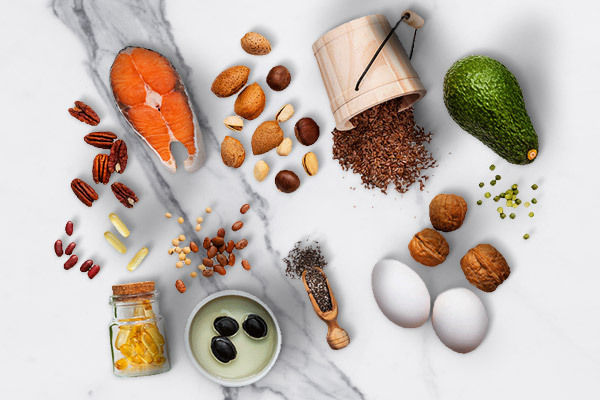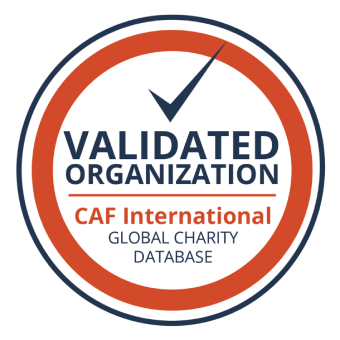Nourishing our family and ourselves with nutritious foods and staying healthy has always been important, but its significance has skyrocketed during this pandemic. As parents, we want to do the best and provide our little ones with the right foods to keep them safe, shield them from diseases, support their growth and help them reach their genetic potential.
So, when we hear this, “If you want to be healthy and eat healthily, cut out the fats!” the first thing we invariably do is cut down on fried foods and switch to ready-made foods that are labelled low-fat. But is this good enough? Or is this the right way to go about trying to be and keep our loved ones healthy?
The first thing to remember is that not all fats are the same, and not all are bad. Certain types of fats called “Good Fats” are essential for your child’s growth and development and need to be included in the diet. Fats are vital for brain development, absorption of fat-soluble vitamins, production of hormones and even helps keep your child warm during the cold winters. So, cutting fats out of your child’s diet or going low fat to make the diet healthy is not the right decision.
The right approach is to shift the balance of fats in the diet by cutting down on the bad fats and increasing the intake of the good fats, especially from plant sources.
But, how do you know which are the bad fats and which are the good fats?
To distinguish between these, you need to essentially look out for the different types of fats present in the foods we eat.
Unsaturated fats are fats that you find in foods like avocados, nuts, seeds, olives, soybean, salmon and vegetable oils like soybean corn, olive, canola, mustard and sesame oil. Unsaturated fats include monounsaturated and polyunsaturated fats, and these are essentially the healthiest of all fats – the good fats. They are beneficial for the heart and protect your little ones from disease.
One particular “superstar” unsaturated fat highly recommended by the medical community is Omega 3 fats. Omega 3s are thought to have numerous benefits such as improving eye and brain health in your little one, reducing ADHD symptoms such as aggression, impulsiveness, restlessness, inattention, decreasing inflammation and even protecting against cancer. Fatty fish like salmon (ravas) and hilsa, walnuts, chia seeds, flax seeds and garden cress seeds (halim) are good sources of Omega 3 fats.
You will, unfortunately, find saturated fats in foods that kids most like. Butter, cheese, whipped cream, milk chocolates and bakery products that use these raw ingredients contain saturated fats. Specific fatty cuts of meats, ghee, coconut oil and palm oil also contain saturated fats. Eating too many saturated fats is not suitable for the heart and can increase children’s risk of developing severe health conditions later on in life. It’s best to try and replace saturated fats with unsaturated fats as much as possible in your child’s diet. But as with anything, remember moderation is the key. Try and keep the overall fat contribution in the diet directly from fats and oils down.
You will find the third type of fats, i.e. trans fats, in foods like cookies, cakes, commercially prepared deep-fried items like puris, vadas, chivdas, bhajiyas. If you want to check the presence of trans-fats in ready to eat foods you buy, then look out for the terms “hydrogenated fats” or “partially hydrogenated fats” in the food ingredients label. Trans-fats are the worst of all fats. Recognising the harmful effects of these in increasing bad cholesterol and decreasing good cholesterol, the Indian government has mandated that all food products sold in India from Jan 2022 cannot have more than 2% of fats trans fats. Trans fats are liquid fats that are modified by the food industry to stay solid at room temperature. Therefore dalda, margarine, cream cheese and any other vegetable shortening that remain solid at room temperature contain trans-fats.
How about going “low-fat”?
Going low-fat is more harmful than you think. Fat gives flavour, texture, and mouthfeel to food. Therefore, when fat is cut out, manufacturers add sugar, fructose corn syrup and other additives to compensate for the lost flavour and texture. So, it would be best to avoid all the ‘low-fat’, ‘lite’, ‘fat-free’ sandwich spreads and salad dressings.
Therefore, some simple ways to make sure you balance the fats in your child’s diet are:
- Reducing the amount of oil you use while cooking
- Switching to unsaturated fats as much as possible
- Reducing deep-fried foods
- Staying clear of low-fat food products.
But remember, along with eating healthy, exercise regularly for a healthy lifestyle and lead by example! At Cuddles Foundation, we curate a child’s diet as per her medical condition and nutritional status, so she has the strength to complete her treatment successfully. Beating childhood cancer starts with eating well. Join us and feed the fight.
Written by:
Dr Sripriya Venkiteswaran
Content Consultant
Cuddles Institute of Clinical Nutrition
References:
- https://kidshealth.org/en/parents/fat.html Accessed on 17th May 2021
- https://www.medicalnewstoday.com/a Accessed on 17th May 2021
- https://www.healthline.com/nutrition/sesame-oil-benefits#TOC_TITLE_HDR_2 Accessed on 17th May 2021
- https://www.nutrition.org.uk/healthyliving/lifestages/children.html?start=1 Accessed on 18th May 2021
- https://fssai.gov.in/upload/media/FSSAI_News_TransFat_Hindu_04_01_2020.pdf Accessed on 18th May 2021
- https://www.healthline.com/nutrition/10-unhealthy-low-fat-foods#TOC_TITLE_HDR_8 Accessed on 17th May 2021





